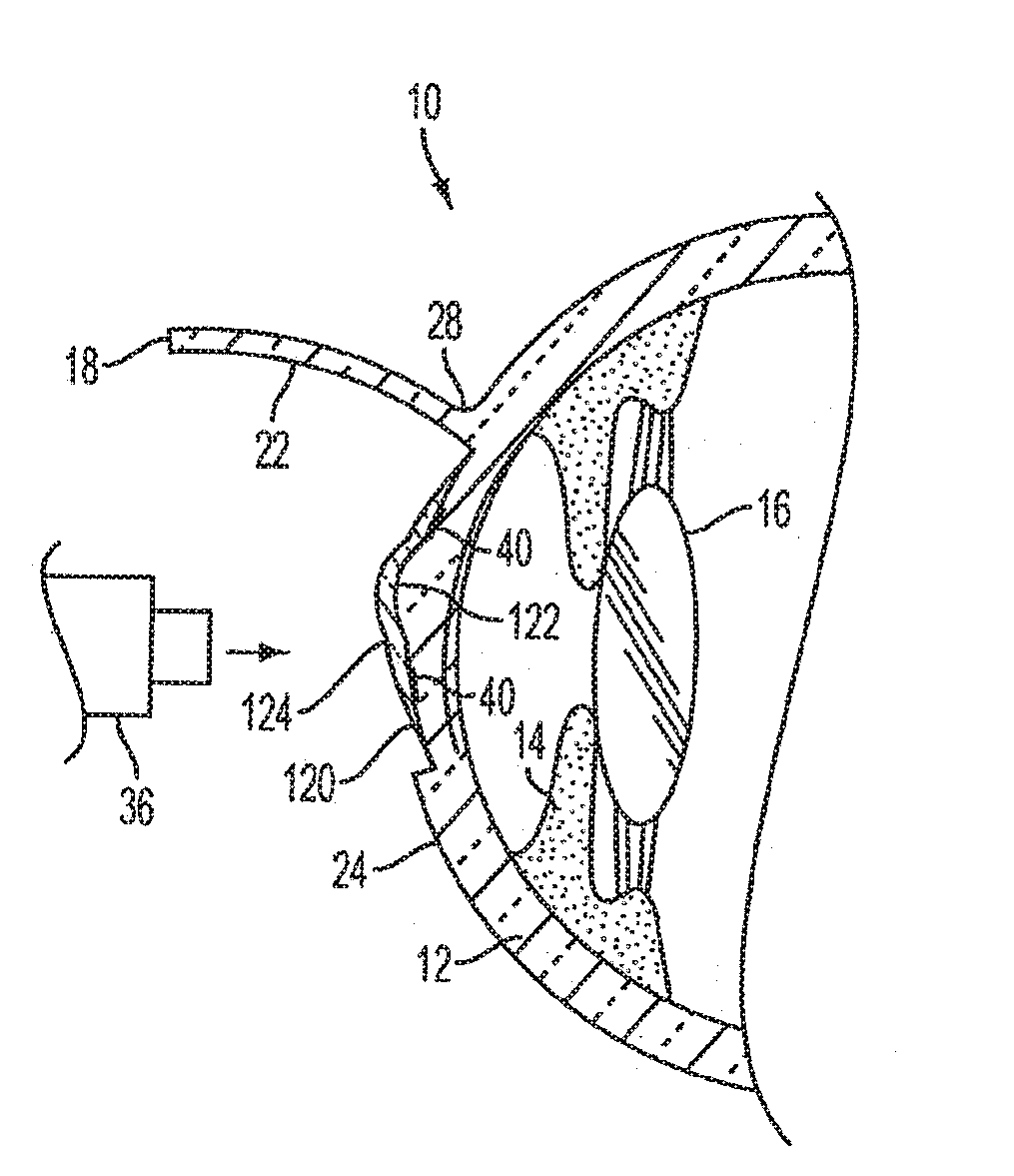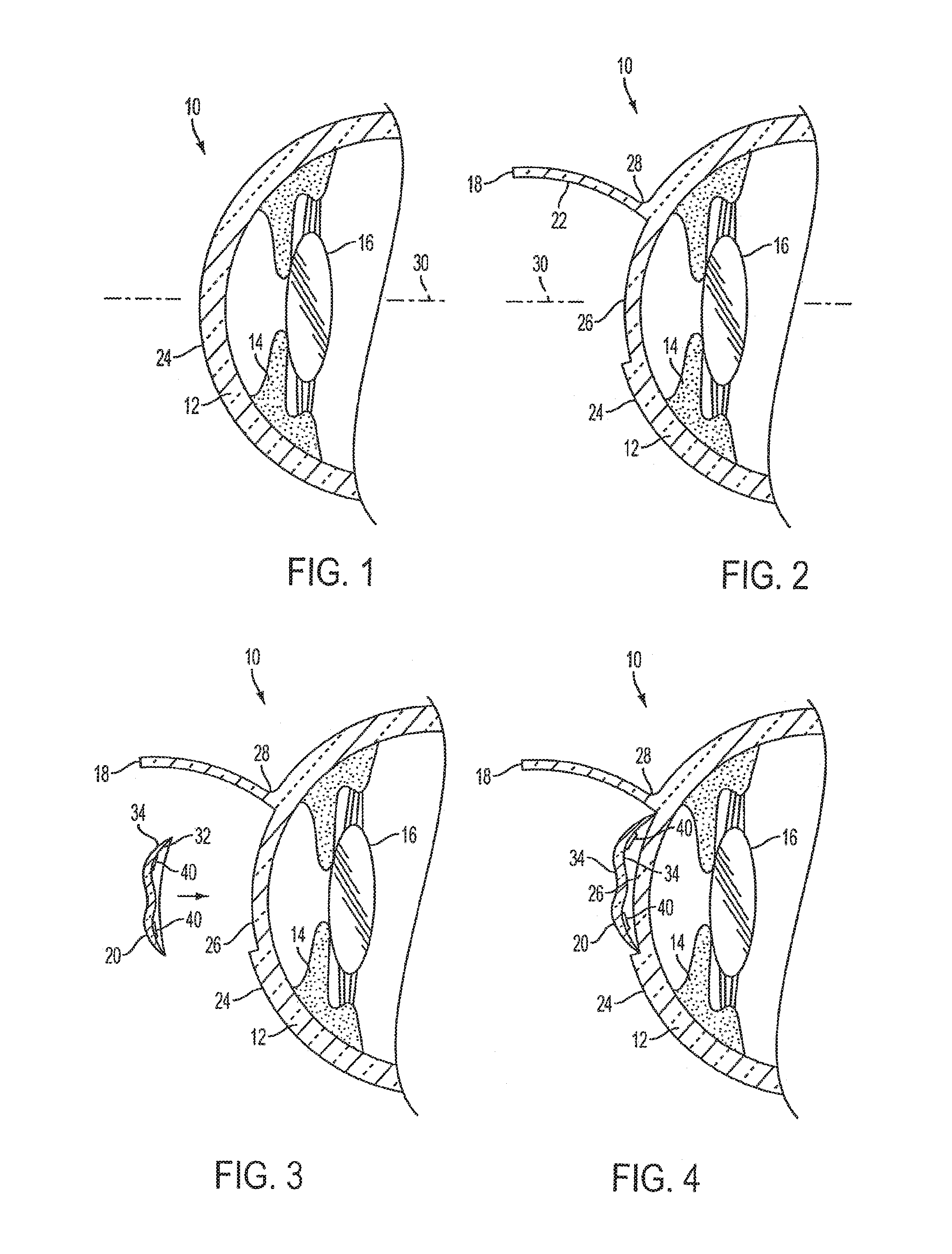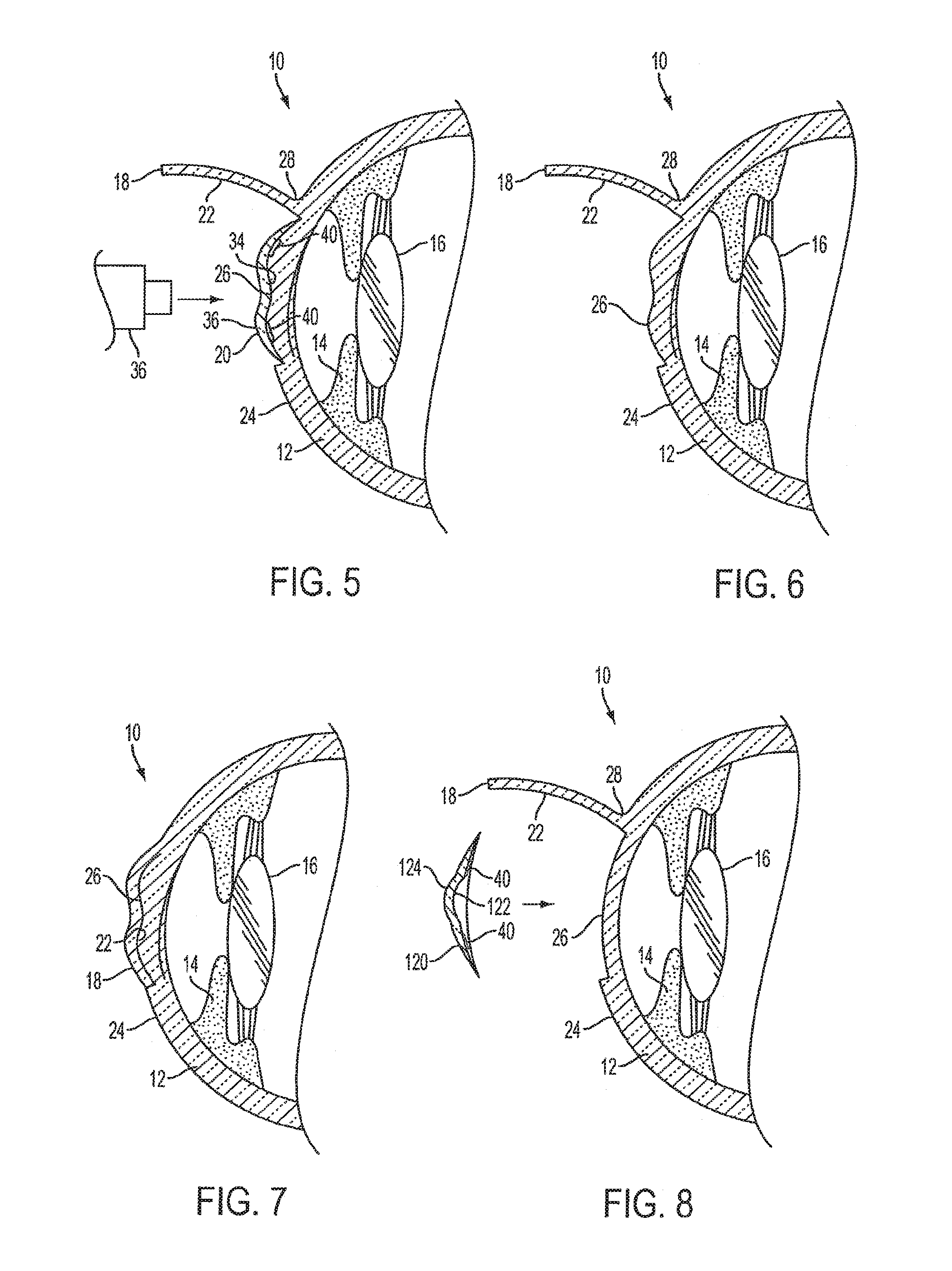Method of altering the refractive properties of an eye
a technology of refractive properties and eye, applied in the field of eye refractive properties, can solve the problems of ametropia, inability of the lens and cornea to accurately focus the far point, and astigmatic eye inability to sharply focus images on the retina, etc., to achieve the effect of reducing postoperative pain sensation, facilitating tissue cross-linking, and stiffening the cornea
- Summary
- Abstract
- Description
- Claims
- Application Information
AI Technical Summary
Benefits of technology
Problems solved by technology
Method used
Image
Examples
Embodiment Construction
[0021]Accordingly, the present invention is directed to a method of altering the refractive properties of the eye that substantially obviates one or more problems resulting from the limitations and deficiencies of the related art.
[0022]In accordance with one or more embodiments of the present invention, there is provided a method of altering the refractive properties of the eye. The method comprising the steps of: (i) applying a photosensitizer to interior tissue of a cornea of an eye, the photosensitizer facilitating cross-linking of the interior tissue of the cornea; (ii) irradiating the cornea so as to activate cross-linkers in the interior tissue of the cornea and thereby stiffen the cornea and prevent corneal ectasia of the cornea; and (iii) after the cornea has been stiffened by the activation of the cross-linkers, ablating a front surface of the cornea so as to change the refractive properties of the eye.
[0023]In a further embodiment of the present invention, the photosensiti...
PUM
 Login to View More
Login to View More Abstract
Description
Claims
Application Information
 Login to View More
Login to View More - R&D
- Intellectual Property
- Life Sciences
- Materials
- Tech Scout
- Unparalleled Data Quality
- Higher Quality Content
- 60% Fewer Hallucinations
Browse by: Latest US Patents, China's latest patents, Technical Efficacy Thesaurus, Application Domain, Technology Topic, Popular Technical Reports.
© 2025 PatSnap. All rights reserved.Legal|Privacy policy|Modern Slavery Act Transparency Statement|Sitemap|About US| Contact US: help@patsnap.com



